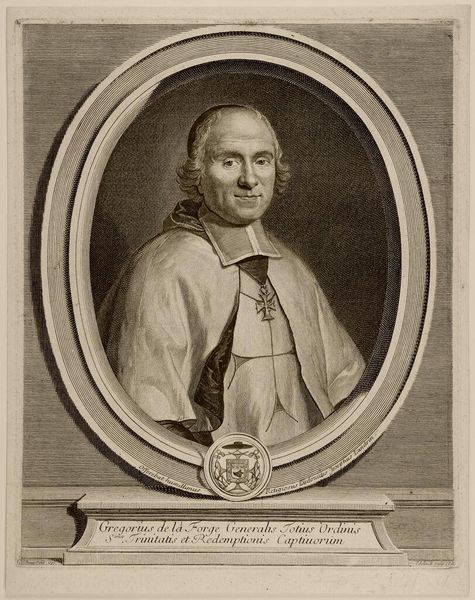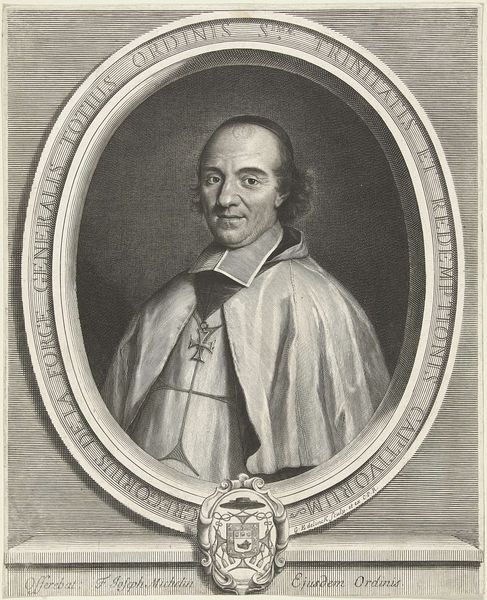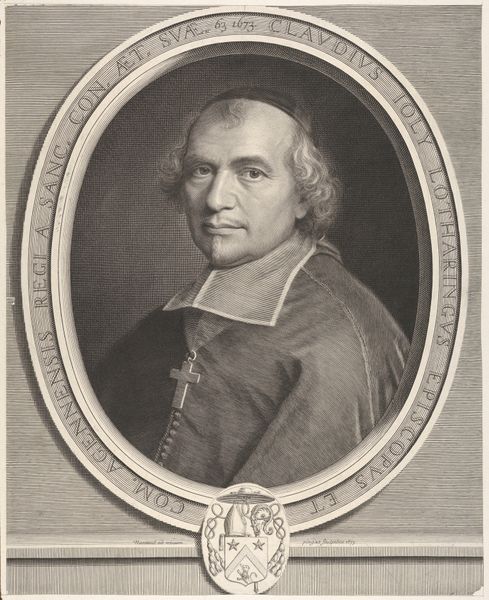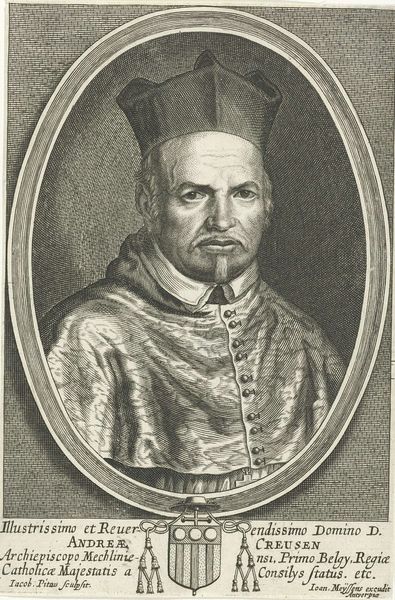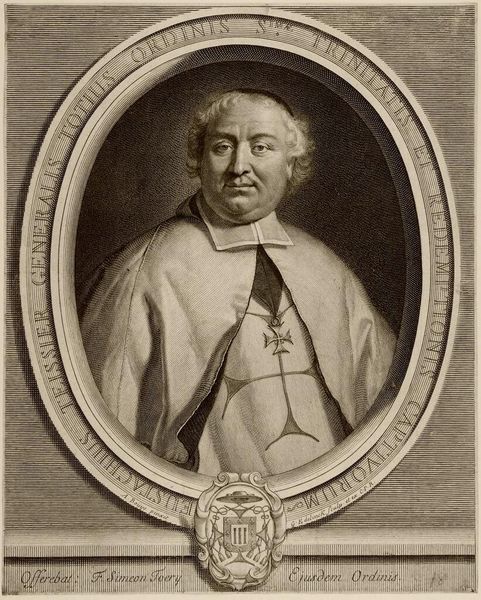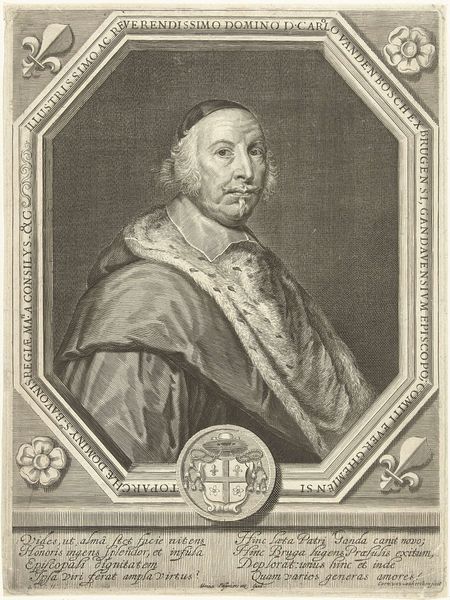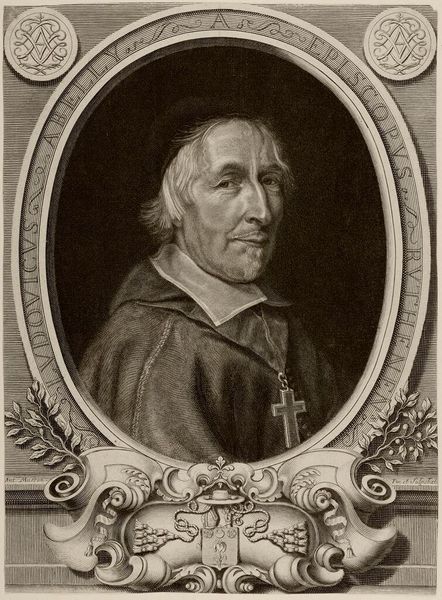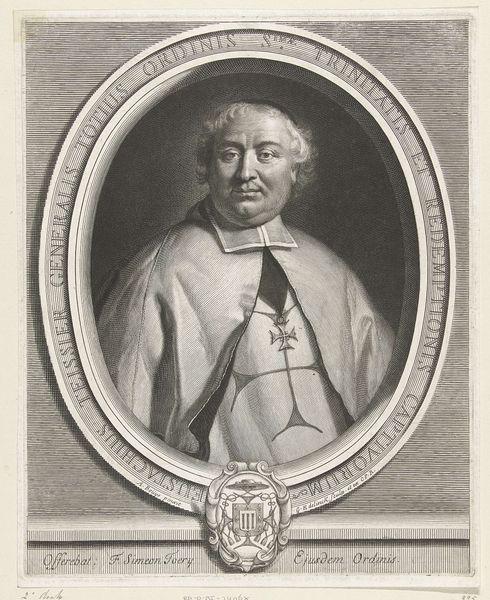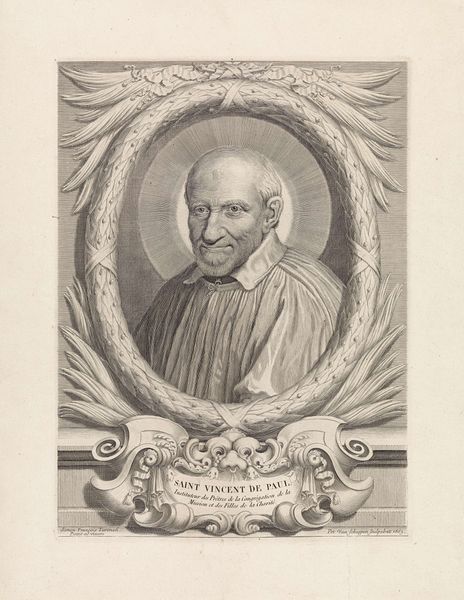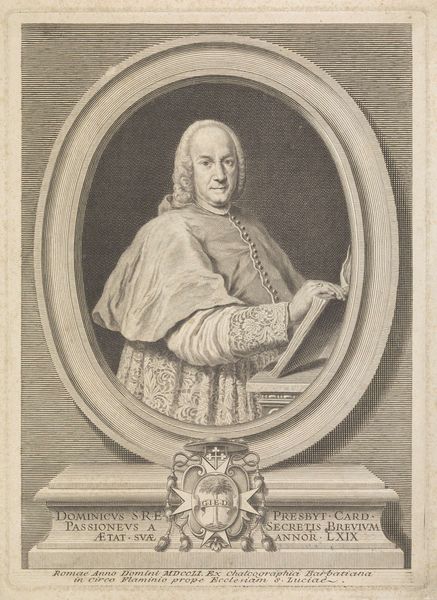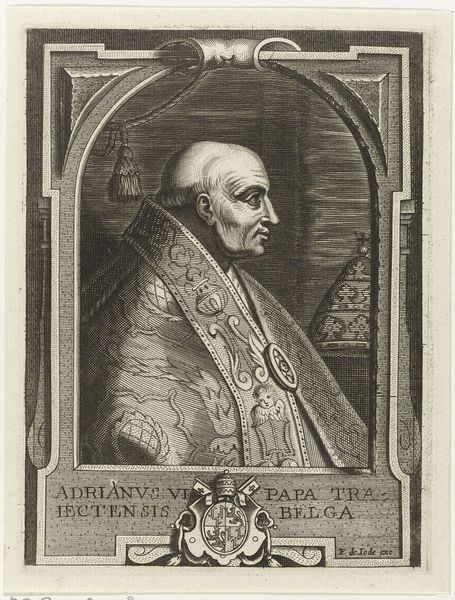
print, engraving
#
portrait
#
baroque
# print
#
old engraving style
#
form
#
line
#
engraving
#
realism
Dimensions: height 348 mm, width 285 mm
Copyright: Rijks Museum: Open Domain
Curator: We're looking at a striking portrait of Grégoire de la Forge, rendered as an engraving by Gérard Edelinck sometime between 1697 and 1707. The work belongs to the Rijksmuseum collection. Editor: My first impression? It's serene, almost otherworldly, yet the man's gaze feels incredibly direct. The detail in the engraving is exquisite, particularly in the texture of his garments and the oval frame that contains him. Curator: Edelinck was a master of the burin, elevating printmaking to an art form admired by the French court. Consider the institutional power at play – a printed image circulating the likeness of such an important religious figure solidified his position. Editor: Exactly. And it reinforces visual hierarchies. Notice the placement of the emblem at the base – a subtle but crucial affirmation of authority, mirroring the opulence often depicted in painted portraits of the period. There is this sense of "manufactured" reverence for institutions, rather than for people. Curator: Precisely! Edelinck capitalizes on realism, employing incredibly fine lines to articulate volume and shadow. But this wasn't simply about likeness; these images served very strategic functions for de la Forge and the Church. The man was General of the Order of the Holy Trinity! Editor: I agree. How are the themes of redemption, power and control wrapped in an image distributed to be kept or gifted as objects that carry meanings from generation to generation? Look at the slight smile that indicates that even as an almost robotic entity. There's this deep question in what he knows of himself. What does that even mean in his current standing? Curator: That gets to a key point. Prints allowed for a dissemination of power impossible before. They functioned as political tools, visual declarations that helped establish dominance and influence far beyond the individual. Editor: Absolutely. When viewing it today, one must remember that every carefully etched line in this image had—and continues to have—an intended consequence. I would say that those historical implications still impact power dynamics nowadays. Curator: I am thinking about those themes today as we move into a more equal society and what "the new figures" will represent. A revolution for our views, I must add. Editor: To conclude I wonder, will "the new" remember to remember? Will the engravings made after be an actual attempt to level the playing field? I really hope that those lines create safe pathways for generations to come.
Comments
No comments
Be the first to comment and join the conversation on the ultimate creative platform.
